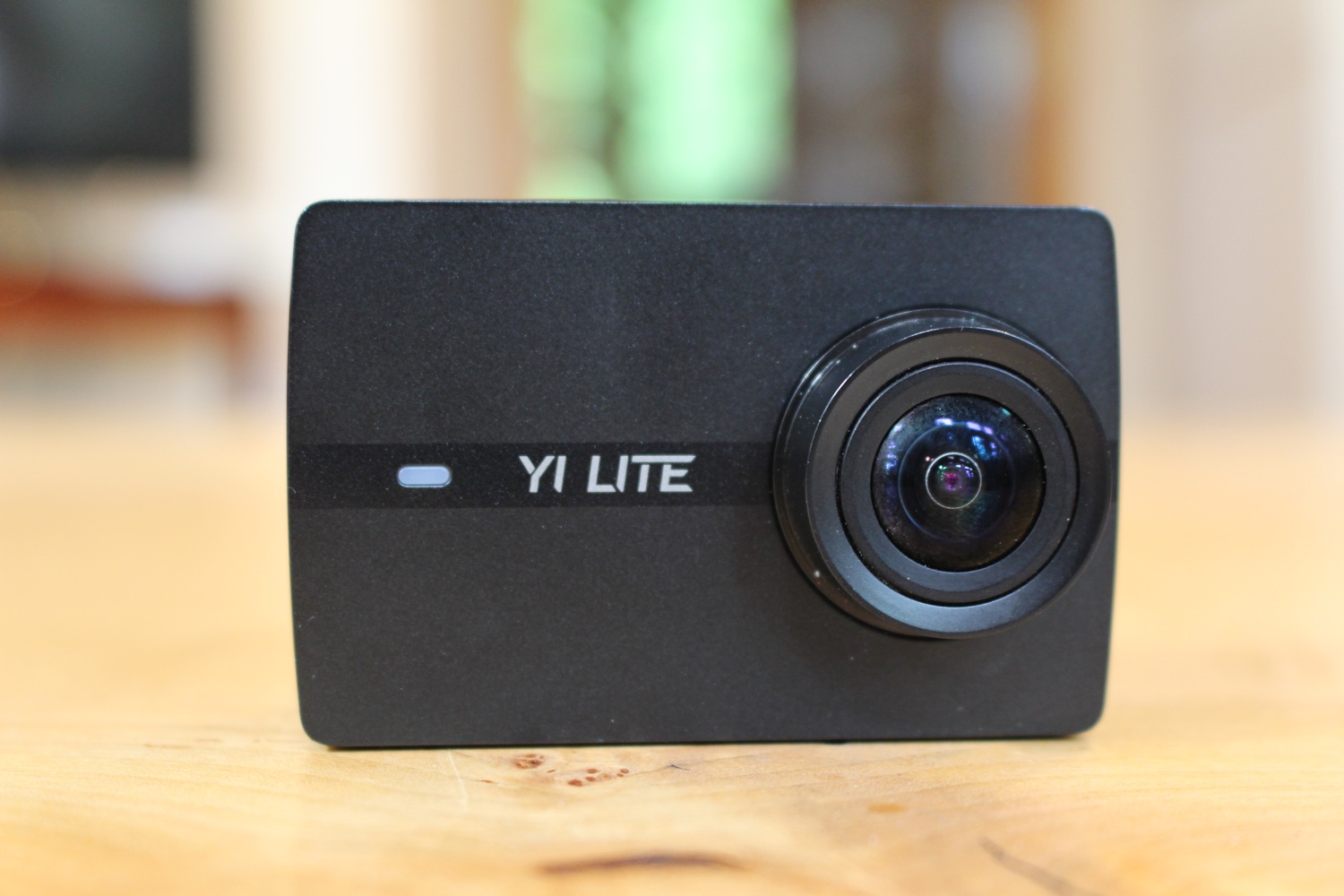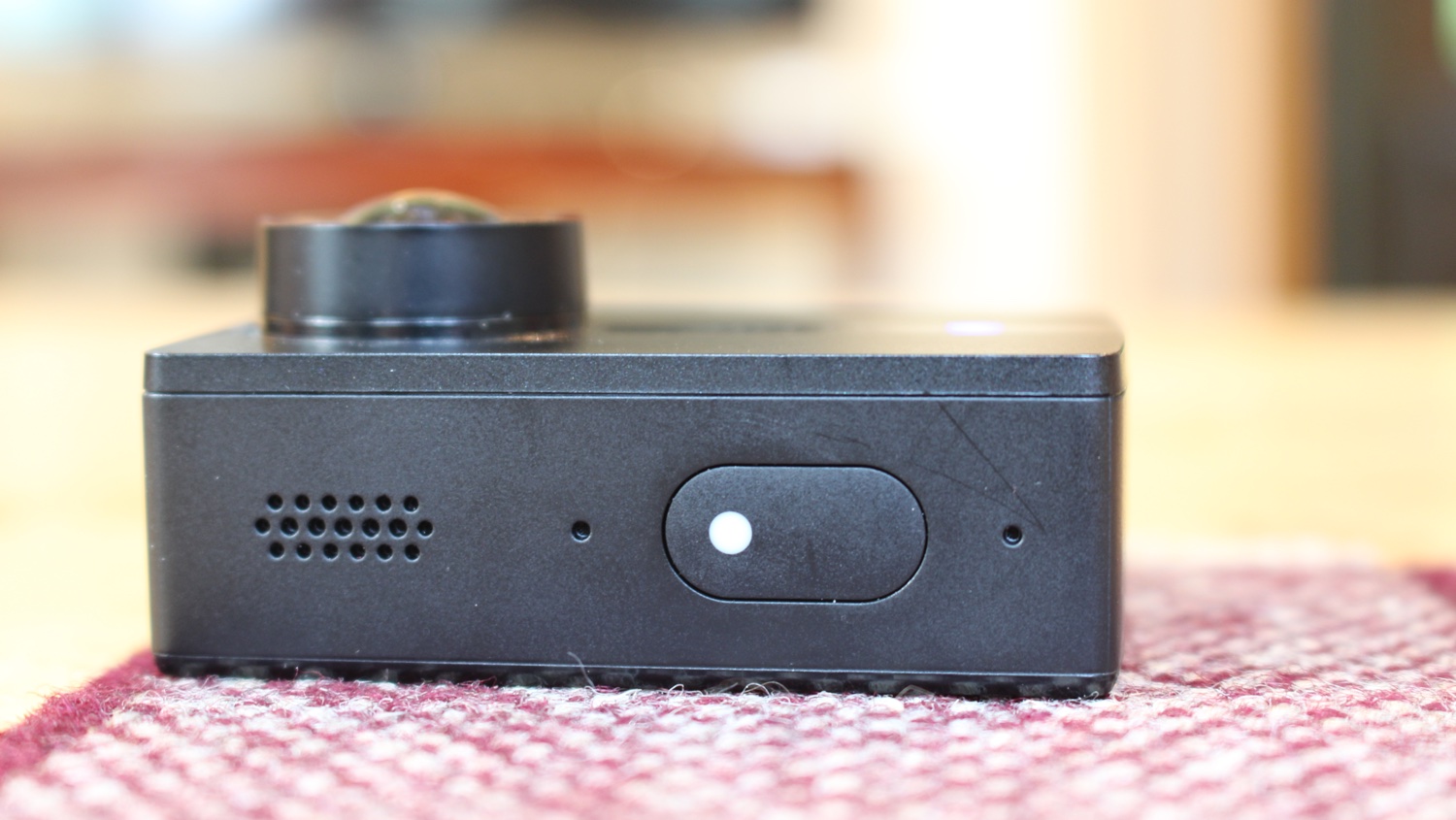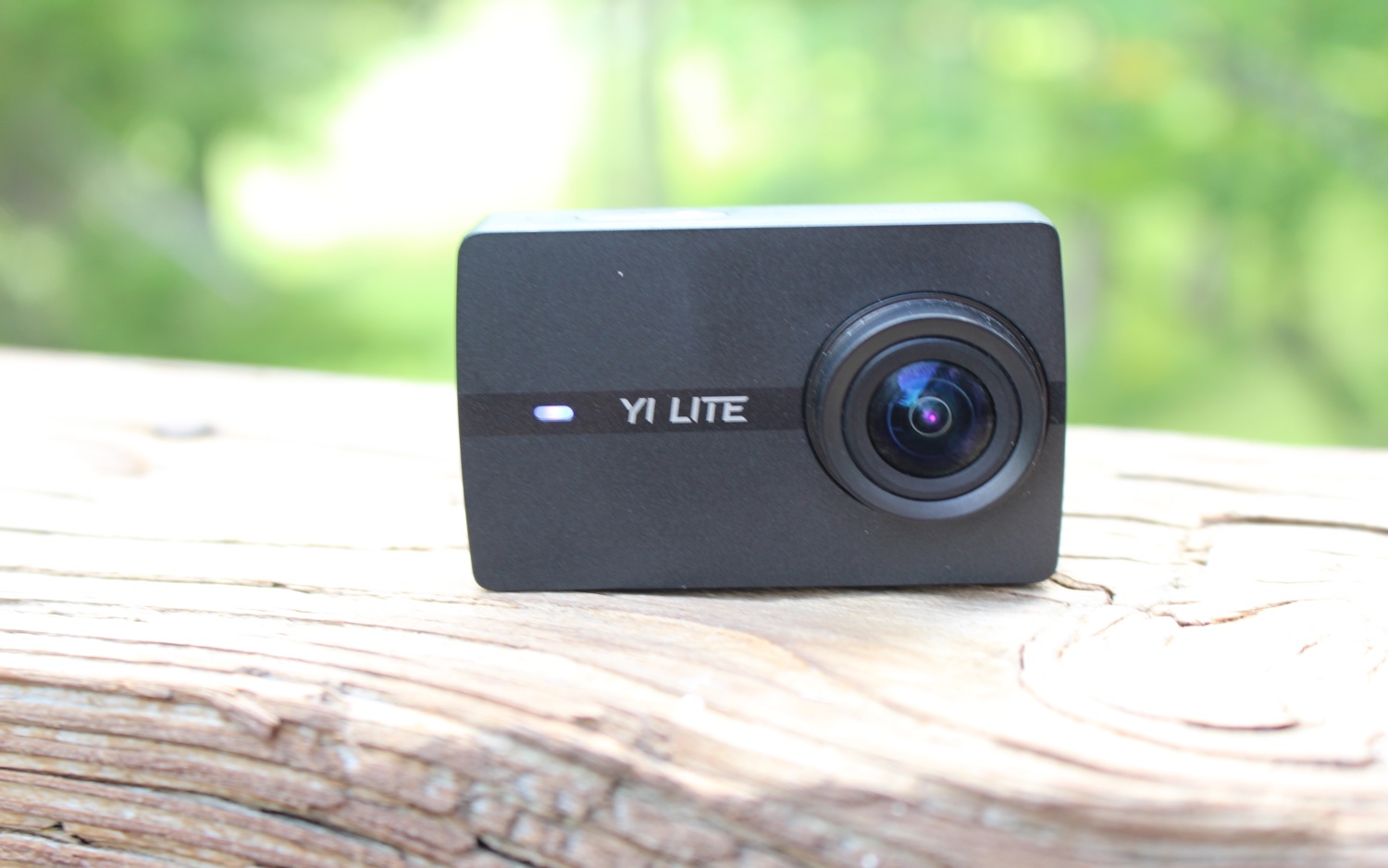Tom's Guide Verdict
The Yi Lite is an impressive, full-featured action camera with above-average performance, a high-quality touch screen and image stabilization.
Pros
- +
Good-quality video
- +
Inexpensive
- +
2-inch Gorilla Glass LCD touch screen
- +
Electronic image stabilization up to 1440/30 fps
Cons
- -
Waterproof case sold separately
- -
Quirky Android app
Why you can trust Tom's Guide
GoPro made a play in the budget action camera space with the $199 Hero, but it's not enough. With features including high-quality video, image stabilization, good audio performance and an easy-to-use touch-screen interface, the $80 Yi Lite is a better, cheaper alternative. While you'll need to purchase a waterproof case separately, this action camera is still a bargain, as well as a serious competitor to both more- and less-expensive models. It's our current favorite budget action camera, but for all of our top picks, check out our best action cameras page.
Design
Compared to other sub-$100 action cameras from Drograce, Akaso and Campark, the Yi Lite is a much more refined and elegantly designed product. It's sleek and clean, with only a single button on the top of the camera, a charging port on the side, a battery door and tripod mount on the bottom, and a 2-inch Gorilla Glass touch screen on the back.

Being more budget-friendly than the $299 Yi 4K+ Action Camera, the Yi Lite relies on a microUSB connection rather than on the faster USB Type-C for charging and file transfer, though I had no issues with this trade-off.

Unfortunately, the Yi Lite does not come with a waterproof housing; you'll have to purchase it separately for $40.
It would have been nice if the Yi Lite had included a few accessories; most other action cams, including budget models, come with a plethora of mounts.
Ease of Use
Because its interface is clean, easy to read and laid out intuitively, the Yi Lite was generally a pleasure to use.

However, a few menu items were abbreviated, which made it difficult to know their functions. While I recognized that "EIS" meant "electronic image stabilization," I had no idea what "LDC" was until I looked it up on the website ("lens distortion correction"). The "AGC" setting was even more obscure; I had to contact Yi's support to find out that this setting helps to improve low-light video but also increases the amount of visual noise in the video.
Get instant access to breaking news, the hottest reviews, great deals and helpful tips.
Hopefully, the company will correct these shortcomings in the next software update.
Although the Yi Lite's 2-inch touch screen is 0.2 inches smaller than the Yi 4K+ model offers, the Yi Lite still holds its own.
The Yi Lite is a nice camera with a similar interface to the more expensive 4K+ model.
The screen was responsive and snappy, and never caused any lag when I changed settings or modes. Compared to the slightly lower-priced Akaso, Drograce and Campark action cameras, the user interface and overall ease of use on the Yi Lite are much better. Rather than making you cycle through menus using a number of button presses, the touch screen menu was a breeze to operate.
You can also control the Yi Lite using an app (Android and iOS) on your smartphone. However, when I opened the app on my Google Pixel 2 and older Samsung Galaxy S7, the connection would not complete. When I tried the same thing using an iPhone 6s Plus, the connection was immediate, and the app had no problems.
Yi Lite's tech support recommended that I turn on Airplane Mode before making a connection. Once I did that, it worked, though that seems a little quirky for such a nice app.
MORE: Best Action Cameras - Reviews, Comparisons and Tests
When it was working, I was able to change individual settings as well as remotely see what I was shooting and start and stop taking photo or video. The app also includes some features that aren't on the camera itself, including the ability to change the display to operate in a horizontal landscape mode. It's a nicely designed app that adds to the value of this camera.
Video Quality
For most of my testing, I shot footage in 1080p at 60 frames per second rather than moving up to 4K at only 20 fps or 1440 at a slightly higher frame rate of 30 fps.

The footage I got while using the Yi Lite was significantly better than that from the Akaso, Campark and Drograce models, simply due to the addition of image stabilization. While it won't solve really hard bumps, it smoothed out footage I took while walking and riding my bike. Shooting at a higher frame rate of 60 fps also helped produce steadier footage.
The footage I got while using the Yi Lite was significantly better than that from the Akaso, Campark and Drograce models, simply due to the addition of image stabilization.
The Yi Lite's footage was on a par with that from the GoPro Hero ($199), which also has electronic image stabilization. You can see a side-by-side comparison of the same footage in 1080p/60 fps of the GoPro Hero while riding my bike.
The Yi Lite offers three resolutions for slow motion: 1080p/60 fps, 720p/120 fps and 360/240 fps. The middle option is probably your best bet to balance resolution and frame rate.
Audio Quality
The Yi Lite does not come with a case, which means that while the camera is exposed to the elements, its microphones aren’t muffled by a plastic housing. In videos of me riding my bike, you can clearly hear cars passing by, as well as the engine as one tuned car accelerated.
When compared side by side to the GoPro Hero, the YiCam edged out the GoPro with slightly better sound due to its two microphones, versus only one on the GoPro. If you want even better audio, you can attach an external microphone via the Yi Lite's microUSB port.
Bottom Line
The $80 Yi Lite offers exceptional value, with solid 1080p video, an easy-to-use touch-screen interface and, while slightly quirky, app support for remote shooting. With electronic image stabilization, the Yi Lite produces far superior image quality than similarly priced competitors and offers an easier-to-use interface while doing it. However, the addition of 4K at a measly 20 fps seems like a marketing afterthought. While we wish the Yi Lite also included the $40 waterproof case, in the end, you'll still get a high-quality product for $70 less than you'd pay for the GoPro Hero.
Adam Weissman is a freelance writer and an outdoor aficionado who has reviewed a number of action cameras and accessories for Tom's Guide. In addition to several GoPro cameras, he has also tested budget action cameras and 360 cameras from a variety of manufacturers, and has tested them in a variety of conditions.
